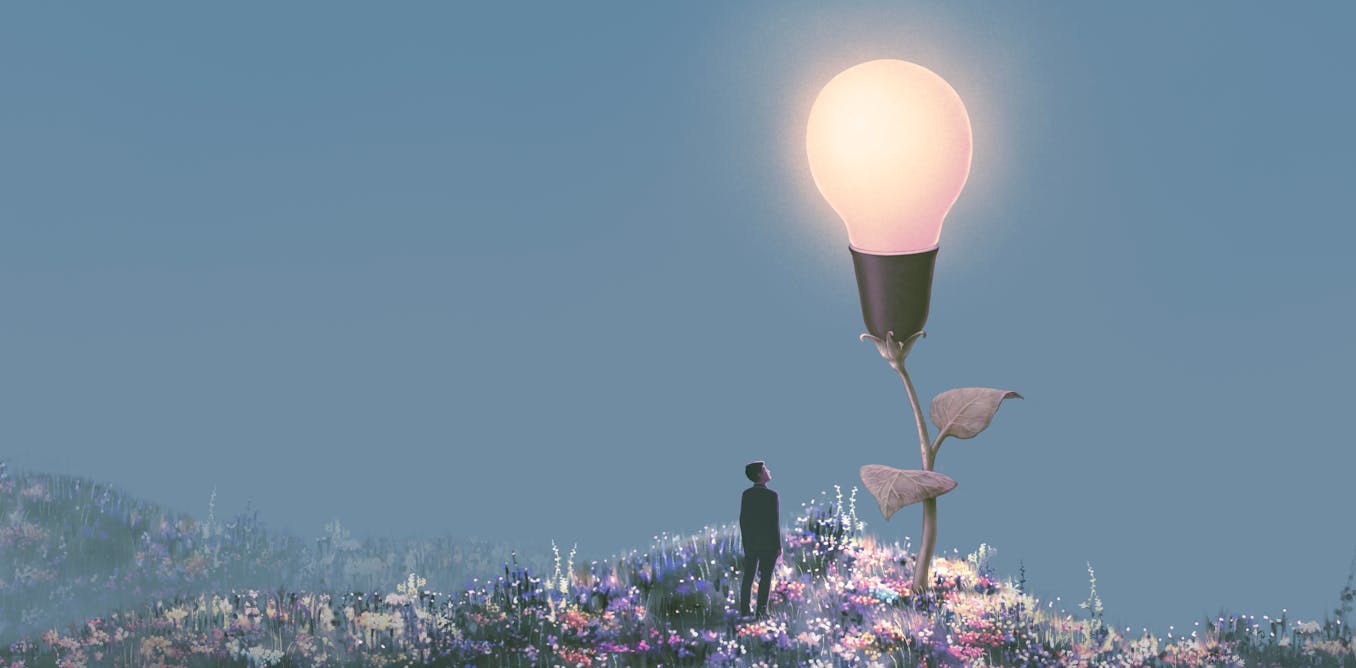A tremendous poster greets visitors to the Metropolitan Museum of Art in New York. Advertising the show of the season, “Siena: The Rise of Painting, 1300-1350,” the poster features a detail from the Raising of Lazarus (1310–11) by Duccio di Buoninsegna, founder of the Sienese school. It shows Christ, surrounded by a crowd, raising his extended arm. If you are familiar with the uncropped painting, you realize that on the right should appear Lazarus in his tomb, eyes now open, come to life at Christ’s command. The museum knows what it is doing: Christ’s dramatic gesture here encapsulates the show’s theme, namely how late medieval Sienese artists revitalized painting, remaking it into a more expressive, naturalistic medium.
Once inside, we feast on a gathering of objects unlikely to be seen together again. We begin with an early painting by Duccio, Stoclet Madonna (c.1295), a tender work depicting Christ’s love for his mother. Nearby, we see examples of the art that influenced Duccio, including a Byzantine Virgin and Child (c.1260-1270), representative of the “Greek style” of many paintings in Italy before his time. Seeing potential in how earlier Byzantine painting could move the viewer despite its somewhat stiff and celestial abstraction, Duccio gave his figures more lifelike gestures and expressions, without forgetting the pulsing energy of color, ornament, and line. When considered alongside earlier and contemporaneous Western sculptors in ivory, wood, and stone (we do not meet his Sienese painter forebears), we partially glimpse how Duccio developed a more relatable painting style, emphasizing the accessibility of the divine.
The magnitude of Duccio’s achievement is felt in the next room where the visitor encounters spectacular examples of his mature art, including portions of his masterpiece, the Maestà (c. 1308-1311), a massive polyptych altarpiece for Siena’s cathedral of which the Raising of Lazarus once formed a part. Although most of the Maestà still resides in Siena, portions of it were broken up and dispersed in the eighteenth century. This is the first time that the surviving scenes from the rear of the altarpiece’s base, called the predella, have been reunited. This earliest known predella includes episodes from Christ’s ministry such as the Temptation of Christ on the Mountain, the Feast at Cana, and the Healing of the Blind Man. Posed in intricate stage-prop architecture or expansive open landscapes, Duccio’s figures behave like real persons, involving themselves in compelling human events full of lively detail. These works are prime examples of his lyrical storytelling.
The influence of Duccio’s innovative approach to relatable, religious painting is evident in the work of the other artists at the center of this show—Simone Maritni and the brothers Pietro and Ambrogio Lorenzetti—all of whom possibly worked in Duccio’s studio. In the Pieve Altarpiece (c. 1320), an enormous gabled polyptych, and the five-paneled Palazzo Pubblico Altarpiece (c. 1326-1330), Pietro Lorenzetti and Simone Martini respectively demonstrated the flexibility of the polyptych format utilized in Duccio’s Maestà. The Lorenzettis also produced smaller devotional works and larger secular frescoes, while creating realistic spatial effects that would not be superseded for a century.
Simone Martini, sometimes belittled as a maker of pretty court confections, emerges here as an artist of drama and depth. His Entombment from the Orsini Polyptych (c. 1326-1334) sees him rendering a moment poignant: in a twilight setting of shadowy trees silhouetted against a blood-red sky, the dead Christ is surrounded by his agonized followers, who gesticulate and pull their hair in paroxysms of grief. Personally, I cannot resist his Christ Discovered in the Temple (1342), which shows the young Christ before his vexed parents after their worrying search. With furrowed brow, Joseph leads his stepson back to his exasperated mother. Christ stands with arms folded, eyes narrowed—a perfect image of sulking adolescent defiance. More psychological study than devotional image, this work does not invite veneration so much as reflection on the actors’ motivations, anticipating later definitions of painting as a medium for pleasurable (rather than purposeful) contemplation.

Beyond its innovative storytelling and naturalism, Sienese art was sumptuous, marked by material and decorative splendor reflecting the city’s great wealth and cosmopolitanism. Located at a nexus of the international textile trade and situated on the road linking Northern Europe to Rome, Siena had a lavish and diverse visual culture. The wondrous variety of objects scattered throughout the exhibition ranges from the city’s homegrown translucent enamelwork to luxurious weavings from Turkey and beyond. And the effects of exchange are often plotted in thrilling detail. Thus, we see the sorts of foreign textiles Pietro Lorenzetti imitated, and the precedents that Duccio and Simone set for Franco-Netherlandish manuscript illumination. After Simone moved to the influential papal court at Avignon in France, his style transformed painting throughout Europe from England to Bohemia. Sadly, this cosmopolitan world met an abrupt end with the Black Death around 1350.
Yet throughout, Siena’s archrival—Florence—goes practically unmentioned. This can be no accident. Ever since Giorgio Vasari wrote the first extensive history of Italian art, Florence has dominated stories told about the rise of painting. Considering earlier painting dead, he claimed Florentines led its rebirth, downplaying Sienese involvement. It has taken the cumulative efforts of numerous scholars, the work of decades, to supplant this narrative. “Siena” is one of the finest fruits of this endeavor, giving the city credit for its outsize contributions.
But there is room for circumspection. Although the show highlights Siena’s cosmopolitanism, it largely ignores key artistic events in Siena’s backyard. Duccio painted for Florentine patrons and probably learned from his Florentine peers, whose naturalism was likewise pioneering. To avoid repeating Vasari’s regional favoritism, we must acknowledge these cities’ mutual influence. Sienese artists integrated all that was best in the world they knew, while contributing much in return. These facts in no way diminish our admiration of Siena’s brilliant particularity, especially its unrivaled pictorial lyricism, so vividly captured in this staggering exhibition.

The post “A Blockbuster Met Exhibition Takes Visitors Back to Siena to Trace the Origins of European Painting” by Emily Watlington was published on 10/29/2024 by www.artnews.com





































Leave a Reply